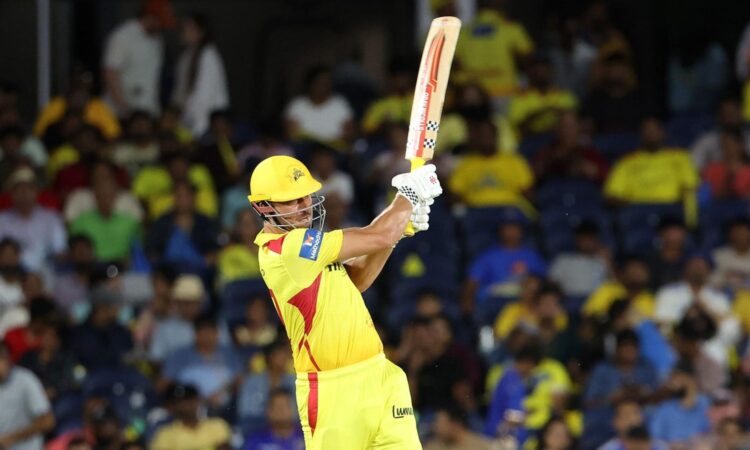
Microsoft CEO Satya Nadella, Reliance chairman Mukesh Ambani, and other deep-pocketed investors worth a collective $126 billion own franchises in Major League Cricket. But launching a new major sports league in the United States has long been a sticky wicket.
By Sofia Chierchio, Contributor
Inside a crowded cricket stadium in Bangalore, India, as the Indian Premier League prepared to begin its inaugural match in April 2008, Anurag Jain gazed at the owner’s balcony as a familiar Hindi song pumped up the many fans in attendance. “Someday, I want to play that song and stand on the balcony like that guy,” he recalls saying. “It wasn’t about vanity; it was about bringing this sport that my family and friends enjoyed together to [America]—my home.”
In India, cricket is widely considered the most popular sport in the country, both by participation and viewership. Yet as successful as it may be in the UK and other former British colonies, the sport has hardly gained a foothold in the United States. But the 54-year-old Jain—chairman of Access Healthcare, a Dallas-based healthcare company—and a group of deep-pocketed investors—including Microsoft CEO Satya Nadella, Reliance Industries chairman Mukesh Ambani, Indian actor Shah Rukh Khan and Jain’s co-owner, Texas real estate developer Ross Perot Jr.—are betting they can finally change that.
Men of the Match: Texas Super Kings co-owners Ross Perot, Jr. and Anurag Jain.
Texas Super Kings
In 2019, American Cricket Enterprises (ACE), the San Francisco-based parent company of Major League Cricket (MLC), pledged $1 billion to develop the sport in the U.S. Three years later, MLC secured $120 million in funding. With just six teams—New York, Los Angeles, San Francisco, Seattle, Texas and Washington, DC—the inaugural 2023 season attracted some 70,000 fans across its games, generating an exceedingly modest $8 million in revenue. With its sophomore season, which began on July 5, underway, MLC is looking to capitalize on surging global interest in the sport, which was bolstered by Team USA’s upset of Pakistan in the Men’s T20 Cricket World Cup in June.
“We’re very serious as a collective,” says former Microsoft executive Sanjay Parthasarathy, who co-owns the Seattle Orcas with Nadella. “We’re seasoned businesspeople. So, we have a discipline, a business discipline. We’re running this like a startup. We’re pinching pennies. We’ve got to invest in the right places so we’re not throwing money around for sure.”
MLC’s backers, many of whom are of Indian descent, don’t have to look too far to find a model for success. Established in 2008, the Indian Premier League (IPL) revolutionized cricket by adopting the T20 format, a shorter, more dynamic version of the game. Traditional cricket matches can last for days, but T20 cricket condensed the action into three and a half hours of energetic play, making it more appealing to a wider audience. And the value of IPL clubs has skyrocketed in recent years, with the average value of the league’s 10 teams crossing $1 billion in 2022, according to Forbes’ most recent valuations.
Fan Favorites: “The Commonwealth Diaspora has always looked at sports differently than the core American audience,” says Seattle Orcas co-owner Sanjay Parthasarathy.
Texas Super Kings
And much as Major League Soccer had to overcome the fact that American soccer fans can already watch the world’s best leagues in the United States, the MLC has to contend with an fanbase that is already tuning in to IPL matches on Willow TV, the main broadcaster of cricket in the US.
“The Commonwealth Diaspora has always looked at sports differently than the core American audience,” Parthasarathy says of the TV challenges. “There is an intersection between the diaspora and the hardcore American sports, so there’s a lot of opportunity to be tapped into. That’s the core; it doesn’t mean that’s where we end.”
For now, according to some owners, the goal for this season is simply to build on the product that debuted last year. The league also has a five-year broadcast partnership with Willow, its most substantial source of revenue. MLC also generates income from ticket sales and sponsorships, taking a page out of the Formula 1 playbook. “One of the biggest sources of income are the logos plastered on our jerseys,” Jain says. “In fact, I think we are the first team to get all of our logo spots sold this year, which I think is an amazing achievement.”
But if cricket is going to be successful in America, a massive investment in infrastructure is needed. Veteran Silicon Valley venture capitalist Anand Rajaraman, co-owner of the San Francisco Unicorns, estimates that a single purpose-built stadium in the Bay Area would cost at least $30 million.
“You’ve got to have world-class places where people can train and play,” Parthasarathy emphasizes. “You can’t play on a baseball diamond because one of the big aspects of cricket is the pitch. It’s got to be well done and done the right way. Those facilities are really important, and I see that happening over the next 10 years.”
In addition to infrastructure for stadiums, many MLC owners believe that attracting a broader cricket audience goes hand-in-padded-glove with cultivating domestic talent. According to MLC rules, of the 11 cricketers on the pitch, at least five must be American players. Sanjay Govil, founder of the Maryland-based Infinite Computer Solutions and owner of the Washington Freedom, believes this strategy allows homegrown talent to learn from some of the best international coaches and players.
Cricket is expected to get another major boost when it makes its Olympic return in 2028 after a 128-year hiatus. Taking place in Los Angeles, the increased attention could be monumental in growing the new league.
“I think it’s extremely important that the world sees cricket at that stage,” Jain claims. “You’ll see how cricket grows because of the Olympics, but most important to us, it’s coming here, it’s coming to our country.”





